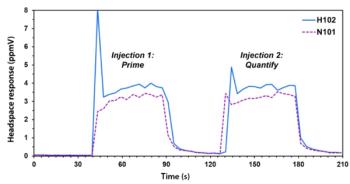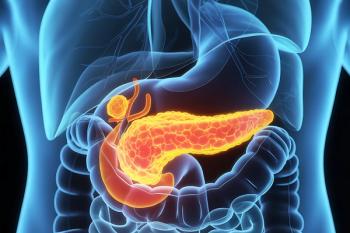Key Points:
- Using HPLC-FLD and HPLC-UV methods, researchers from universities in Turkey conducted one of the first studies to simultaneously detect ochratoxin A (OTA) and deoxynivalenol (DON) in commercially available tortillas, revealing that 25% of samples contained OTA and 10.7% contained DON, all within EU safety limits.
- Although estimated exposure levels posed minimal health risks overall, the study emphasized the importance of ongoing surveillance, especially for vulnerable populations, due to potential chronic effects of low-level mycotoxin exposure and the risk of co-contamination.
- The researchers advocate for enhanced regulatory controls, better storage and processing practices, and future studies into acetylated DON derivatives and emerging mycotoxins (such asenniatins and beauvericin), as well as the toxicological interactions among co-occurring contaminants in tortillas.
Researchers from Selçuk University (Konya, Turkey) and Hitit University (Corum, Turkey) aimed to address a critical knowledge gap by investigating the natural occurrence of ochratoxin A (OTA) and deoxynivalenol (DON) in commercially available tortillas. This researched concentrated on assessing the associated health risks through chronic dietary exposure estimation, using margin of exposure (MOE) analysis for OTA and comparison with the tolerable daily intake for DON. Contamination levels were quantified using validated analytical methods based on high-performance liquid chromatography (HPLC) coupled with fluorescence or ultraviolet detectors (HPLC-FLD or HPLC–UV).
This is among the first studies to simultaneously report OTA and DON occurrence in tortillas alongside a dietary risk assessment, the researchers wrote. These findings, they wrote, could provide a scientific basis for developing mitigation strategies and informing regulatory actions to improve the safety of tortillas and related cereal-based products. A paper based on their work was published in Mycotoxin Research (1).
Tortillas are nutrient-dense flatbreads are traditionally made from maize (Zea mays L.) or wheat (Triticum spp.), with diameters ranging from 12 to 18 cm and thicknesses between 1 and 4 mm. Tortillas are widely regarded as a staple food in numerous cultures, particularly in Latin America. These flatbreads have gained popularity due to their versatility and adaptability across various culinary traditions, as well as their cost-effectiveness and suitability for diverse dietary patterns, all of which reinforce their indispensable role in both traditional and modern food systems.
Tortilla popularity has increased dramatically over the years, with consumption currently observed across various regions worldwide, including Central America, Europe, and parts of Asia (2,3). However, like other cereal-based products, tortillas are susceptible to mycotoxin contamination during cultivation, processing, and storage. Produced by specific fungi, these toxic secondary metabolites pose substantial risks to food safety and public health, with aflatoxins (AFs), fumonisins (FUM), zearalenone (ZEA), OTA and DON being of noteworthy concern due to their toxicity, stability, and widespread occurrence in cereal-based foods (4,5).
In this study, a total of 84 tortilla samples, randomly collected in their original packaging from tortilla manufacturing companies in Corum Province, Turkey. were analyzed between February and May 2024 to assess the contamination levels of OTA and DON. Five distinct brands, designated as Brand A through Brand E, were included in the sampling to ensure product diversity, with batch numbers, production dates, and expiration dates recorded to enhance traceability and reproducibility. Prior to analysis, each sample was dried at 60 °C in a laboratory oven and homogenized in a blender to reduce the potential impact of heterogeneous mycotoxin distribution (1).
The researchers report that OTA was detected in 25% of the samples, with concentrations remaining well below the European Union maximum level (EU ML), while DON was present in 10.7% of samples, also within permissible levels. Co-contamination was observed in three samples, which emphasizes the importance of simultaneous monitoring of multiple mycotoxins due to their potential synergistic toxic effects. The data revealed product-specific variations in mycotoxin content, influenced by factors such as raw material contamination, environmental conditions, and post-harvest handling practices. OTA contamination was widespread across various tortilla types, whereas DON occurrence appeared more limited. The thermal and chemical stability of DON during processing, including nixtamalization, presents additional challenges and underscores the need for further research into both traditional and emerging processing techniques aimed at mitigating OTA and DON contamination (1).
The researchers state that, overall, exposure to OTA and DON through tortilla consumption was found to pose minimal health risks under the scenarios evaluated. Nonetheless, considering the chronic health risks associated with prolonged low-level exposure to mycotoxins, particularly in populations for whom tortillas constitute a dietary staple. They believe that proactive measures are warranted, with particular attention afforded to vulnerable populations, including pregnant women, the elderly, and immunocompromised individuals, for whom even low-level chronic exposure to OTA and DON may pose heightened health risks. The increased susceptibility observed in these groups underscores the need for more conservative safety thresholds and the development of tailored risk assessment models.
In line with this, the researchers recommend that measures such as stringent regulatory surveillance, improved storage conditions, and optimized processing practices be prioritized. Furthermore, future studies are recommended to focus on acetylated derivatives of DON and emerging mycotoxins such as enniatins and beauvericin, which have been increasingly recognized for their relevance in cereal-based products. Future research should focus on evaluating effective mitigation strategies and investigating the interactive effects of co-occurring mycotoxins in tortillas to ensure consumer safety and protect public health (1).
References
- Afacan, F. O.; Odabas, E.; Yussuf, N. H, et al. Co-Occurrence and Risk Assessment of Ochratoxin A and Deoxynivalenol in Tortillas. Mycotoxin Res. 2025, DOI: 10.1007/s12550-025-00596-z
- Astorga-Gaxiola A. H.; Mora-Rochín, S.; Sandoval-Sicairos, E. S. et al. Tortillas. In: Cereal-Based Food Products; Sah, M. A, Sunooj, K. V,.; Mir, Ş. A. (Eds.) Springer International Publishing, 2023, 127–145.
- Cortés-Gómez, A.; San Martin-Martinez, E.; Martı́nez-Bustos, F. et al. Tortillas of Blue Maize (Zea mays L.) Prepared by a Fractionated Process of Nixtamalization: Analysis Using Response Surface Methodology. J. Food Eng. 2005,66, 273–281. DOI: 10.1016/j.jfoodeng.2004.03.018
- EFSA – European Food Safety Authority. Statement on the Risks for Public Health Related to a Possible Increase of the Maximum Level of Deoxynivalenol for Certain Semi-Processed Cereal Products. EFSA J. 2013, 11, 3490. DOI:10.2903/j.efsa.2013.3490
- EFSA – European Food Safety Authority. Risk Assessment of Ochratoxin A in Food.EFSA J. 2020,18,6113. DOI: 10.2903/j.efsa.2020.6113






